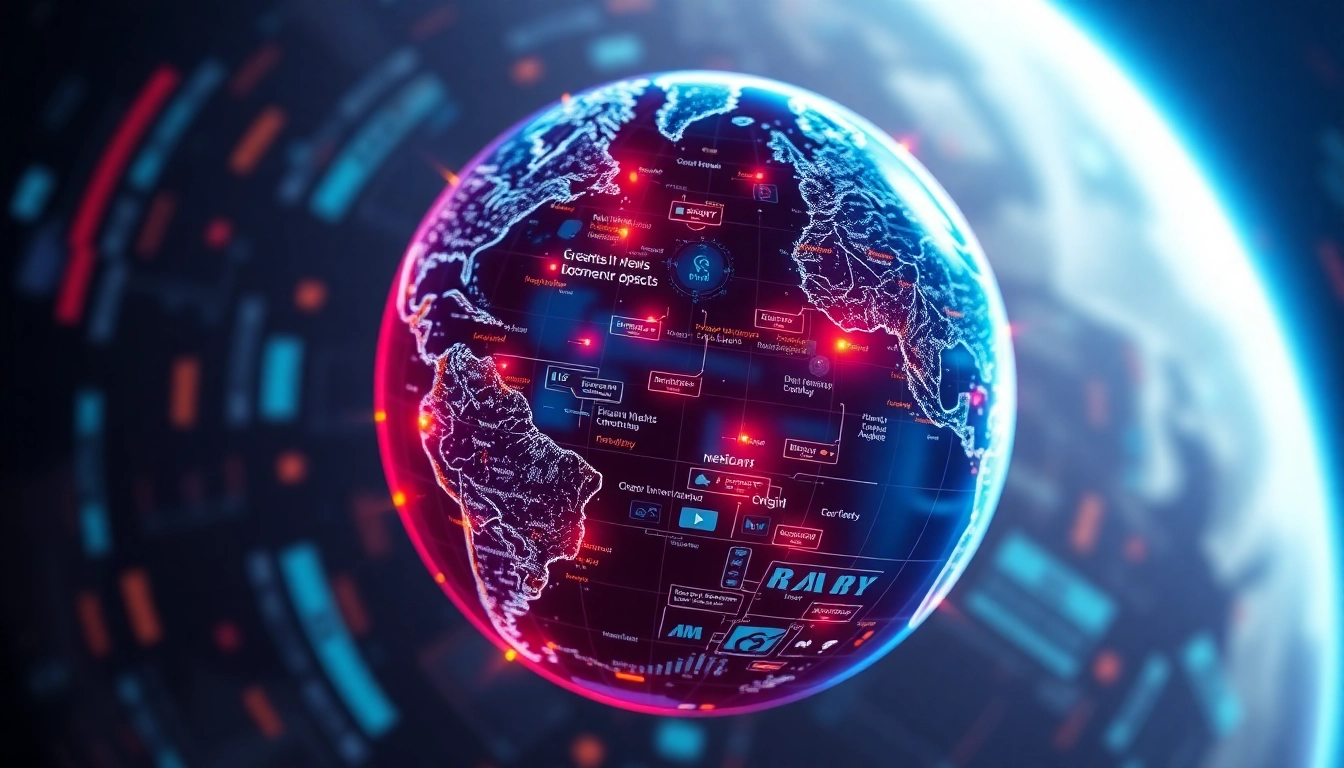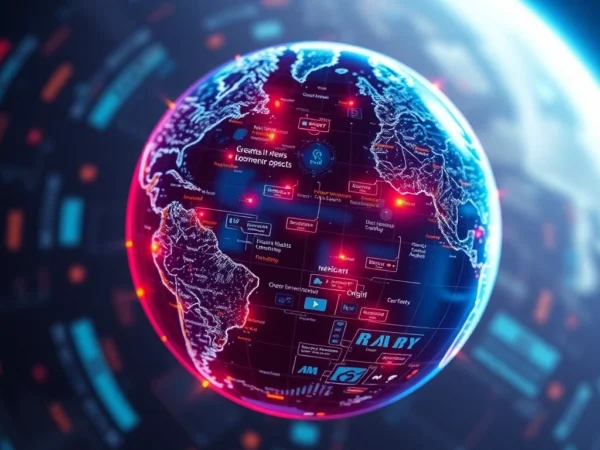Comprehensive Analysis of Major Developments in World News and Their Global Impact
Current Trends Shaping Global News Coverage
The landscape of World News is continuously evolving, driven by geopolitical shifts, technological innovations, and societal transformations. Today’s global political realignments influence diplomatic relationships, economic policies, and security strategies, making it essential for news outlets and consumers to stay informed about these dynamic changes. For instance, recent developments like the ongoing conflict in Ukraine, the resurgence of diplomatic dialogues between major powers, and the shifting alliances in regions like the Indo-Pacific highlight the importance of adaptive reporting that provides nuanced insights. As global actors navigate an increasingly multipolar world, understanding the interplay of political decisions and their ripple effects on international stability becomes crucial.
Emerging conflicts—whether territorial disputes, cyber warfare, or trade wars—are rapidly reshaping the geopolitical landscape. Resolutions are often complex, requiring multilateral cooperation, diplomatic finesse, and strategic negotiations. For example, recent negotiations involving Iran’s nuclear program and the normalization of relations between Israel and several Arab nations demonstrate the multifaceted nature of international diplomacy. These developments underscore the importance of comprehensive reporting that offers context, analysis, and a forward-looking perspective.
On the economic front, global markets are impacted by policy decisions, technological advancements, and unforeseen crises. The increasing adoption of AI, blockchain, and green energy technologies has transformed traditional industries and created new economic frontiers. Major financial hubs—like New York, London, and Tokyo—are witnessing shifts that influence global trade and investment patterns. Staying abreast of these developments requires accessing reliable sources that provide data-driven insights, geopolitical analysis, and economic forecasts.
Key International Events and Their Global Impact
Geopolitical Conflicts and Peace Initiatives
Recent geopolitical conflicts have significantly impacted international stability. The Russia-Ukraine war, for instance, has not only caused humanitarian crises but also altered energy supplies and security policies across Europe. Similarly, tensions in the South China Sea and the Taiwan Strait remain focal points of concern, with potential implications for global trade routes and regional security. International organizations like the United Nations and regional alliances such as NATO have been working to mediate and de-escalate tensions, but progress remains often slow and fraught with challenges.
Technological Advancements Shaping Global Stability
Technology continues to revolutionize the geopolitical landscape. The deployment of advanced surveillance systems, cyber capabilities, and artificial intelligence enables nations to gain strategic advantages. Recent leaks about AI’s role in military applications, alongside the proliferation of cyberattacks targeting critical infrastructure, reflect the dual-use nature of such innovations. Countries investing heavily in tech-centric defense systems are shaping new forms of warfare, raising questions about Global stability and the future of international security architecture.
International Cooperation and Multilateral Initiatives
Despite conflicts, several nations and organizations promote cooperation on issues such as climate change, health crises, and economic development. The Paris Agreement exemplifies collective efforts to reduce carbon emissions, while the World Health Organization coordinates responses to global health emergencies like COVID-19. Initiatives like the Belt and Road Initiative and the G20 summits serve as platforms for dialogue, though geopolitical rivalries often hamper progress. Analyzing these collaborations offers insights into how international diplomacy strives to balance competition and cooperation.
Critical Intersections: Health, Environment, and Society in World News
Global Health Crises and Responses
The COVID-19 pandemic exposed vulnerabilities in global health systems, prompting widespread reforms and innovations. Vaccination campaigns, bolstering healthcare infrastructure, and international collaborations like COVAX exemplify efforts to combat infectious diseases. Emerging threats such as antimicrobial resistance and new virus strains necessitate ongoing vigilance. Analyzing how countries respond to health emergencies and allocate resources provides a window into their priorities and resilience.
Environmental Concerns and Climate Change
Climate change remains a defining challenge of our era, with rising temperatures, extreme weather events, and biodiversity loss impacting millions worldwide. Recent reports highlight devastating floods in Southeast Asia, wildfires in Australia, and droughts in Africa—each illustrating the urgent need for sustainable policies. International summits continue to push for ambitious targets, but implementation gaps persist. Coverage of these issues helps contextualize the global effort to balance development and conservation amidst mounting environmental crises.
Social Movements and Cultural Shifts
From Black Lives Matter protests to feminist and LGBTQ+ rights movements, social upheavals reflect profound shifts in societal values. Media coverage that emphasizes grassroots activism, policy changes, and cultural dialogues helps us understand evolving norms. For example, recent protests across multiple countries over economic inequality and political repression highlight the power of collective action in shaping policy and public discourse.
Strategies for Staying Informed in a Rapidly Changing World
Top Sources and Media for Reliable Reporting
To navigate the vast sea of information, consumers must prioritize reputable outlets such as the BBC, CNN, Reuters, and Al Jazeera that uphold journalistic standards. Many outlets now offer multilingual content and multimedia formats—videos, podcasts, and data visualizations—that enhance understanding. Subscribing to newsletters, following expert analysis, and leveraging fact-checking platforms help verify the authenticity of news.
Tools and Techniques for Real-Time Updates
Utilizing news aggregator apps like Google News or Flipboard enables users to customize feeds based on interests and regions. Setting alerts for specific topics or keywords ensures timely notifications of breaking developments. Social media platforms, when used judiciously, can offer on-the-ground perspectives, but it’s crucial to cross-reference claims with credible sources to avoid misinformation.
Assessing Credibility in a Digital Age
Critical thinking and media literacy are indispensable. Evaluating the source’s reputation, checking for author credentials, and analyzing the reported evidence help distinguish fact from opinion or propaganda. Developing a habit of consulting multiple outlets allows for a balanced understanding of complex issues.
Looking Ahead: The Future of Global News Landscape
Emerging Trends in International Journalism
The future of world news is poised to be heavily influenced by technological innovations such as artificial intelligence, augmented reality, and data journalism. These tools will enable more immersive, personalized, and data-rich storytelling. Additionally, increasing emphasis on indigenous, marginalized, and underrepresented voices will diversify perspectives in reporting and foster greater inclusivity.
Impact of AI and Automation in News Production
AI-driven algorithms increasingly curate and generate news content, streamline fact-checking, and personalize consumption experiences. While enhancing efficiency, this paradigm raises concerns about bias, transparency, and the potential for misinformation. Ethical frameworks and regulatory oversight will be critical to ensure AI serves the public interest without compromising journalistic integrity.
Predictions for Global News Consumption
In the coming years, multimedia and mobile-centric consumption will dominate, driven by innovations like 5G and wearable devices. Interactive storytelling and immersive experiences will deepen user engagement. Moreover, the democratization of content creation—enabled by citizen journalism and social media—will make global news more accessible but also necessitate rigorous verification standards to combat fake news.

